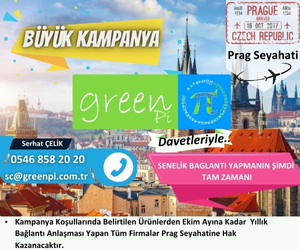Kategori : ELECTRICITY ENERGY NEWS, ENERGY AGENDA NEWS - Tarih : 08 July 2021
COVID-19 changed how we live and work in ways that will alter our behavior long after the pandemic subsides. Companies moved rapidly to deploy digital and automation technologies, dramatically accelerating trends that were unfolding at a much slower pace before the crisis. Work went remote, shopping, entertainment, and even medicine went online, and businesses everywhere scrambled to deploy digital systems to accommodate the shifts.
These changes in consumer behavior and business models will persist in advanced economies after the pandemic recedes, although perhaps not with the same intensity as during the crisis. They promise big  benefits in terms of higher productivity, efficiency, and innovation—but also could lead to an uneven economic recovery, with rising inequality among workers, contrasting outcomes for consumers depending on their age and income levels, and a growing gulf between outperforming companies and the rest—unless business leaders and policy makers take action to mitigate these unwanted effects.
benefits in terms of higher productivity, efficiency, and innovation—but also could lead to an uneven economic recovery, with rising inequality among workers, contrasting outcomes for consumers depending on their age and income levels, and a growing gulf between outperforming companies and the rest—unless business leaders and policy makers take action to mitigate these unwanted effects.
Here we draw on insights from three recent McKinsey Global Institute reports to offer a perspective on how the pandemic may reshape the future of work, consumer behavior, and productivity and growth over the next several years. The research focuses primarily on changes we have observed in advanced economies in Europe and North America. In Asia, where countries controlled COVID-19 more rapidly and effectively, the behavioral changes are less pronounced.
The actions we collectively take today—from investing in human capital to enabling a surge of entrepreneurship to diffusing technology to companies of all sizes—could create a virtuous cycle of job growth, rising consumption, and productivity growth. Lessons from past recessions reveal that this is not only possible but routinely occurred in many post-war recessions. Failure to act is likely to deliver a tepid, two-speed recovery like we saw after the 2008 financial crisis.
Every activity and function that could move online did, fueling a mass digital migration. Companies sent their employees home and eliminated business travel, and many now plan to continue with some hybrid form of remote work and virtual meetings. Consumers went online to fulfil needs ranging from buying groceries and taking school classes to exercise and doctor appointments. Businesses also turned to digital tools in new ways. Auto dealerships used email, text messaging, Zoom, and Facetime to sell cars without any contact with customers, for example. Fast-food restaurants created “ghost” kitchens devoted solely to filling online delivery orders. Companies turned to automation and AI to cope with surges in demand and the need to reduce workplace density. Some of these changes delivered more convenience and greater efficiency and so are likely to endure well after the pandemic has receded.





